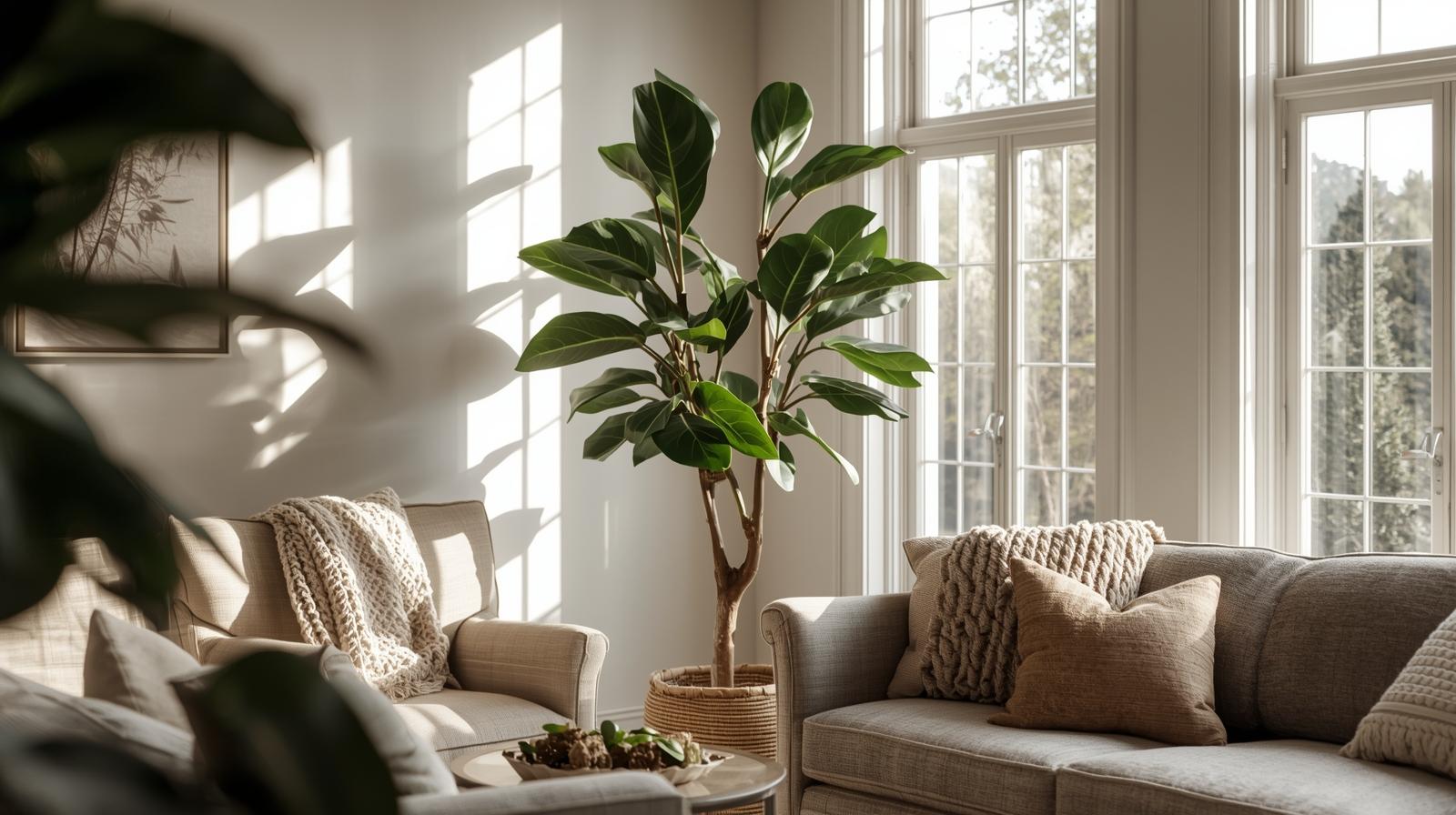Watching your once-compact fiddle leaf fig stretch into a tall, spindly version of its former self is disheartening, especially when it loses that full, bushy appearance that made you fall in love with it initially.
Legginess in fiddle leaf figs is one of the most common complaints I encounter from plant parents, and after years of helping transform stretched-out specimens back into lush, full plants, I’ve learned that this problem is both completely preventable and entirely reversible with the right approach.
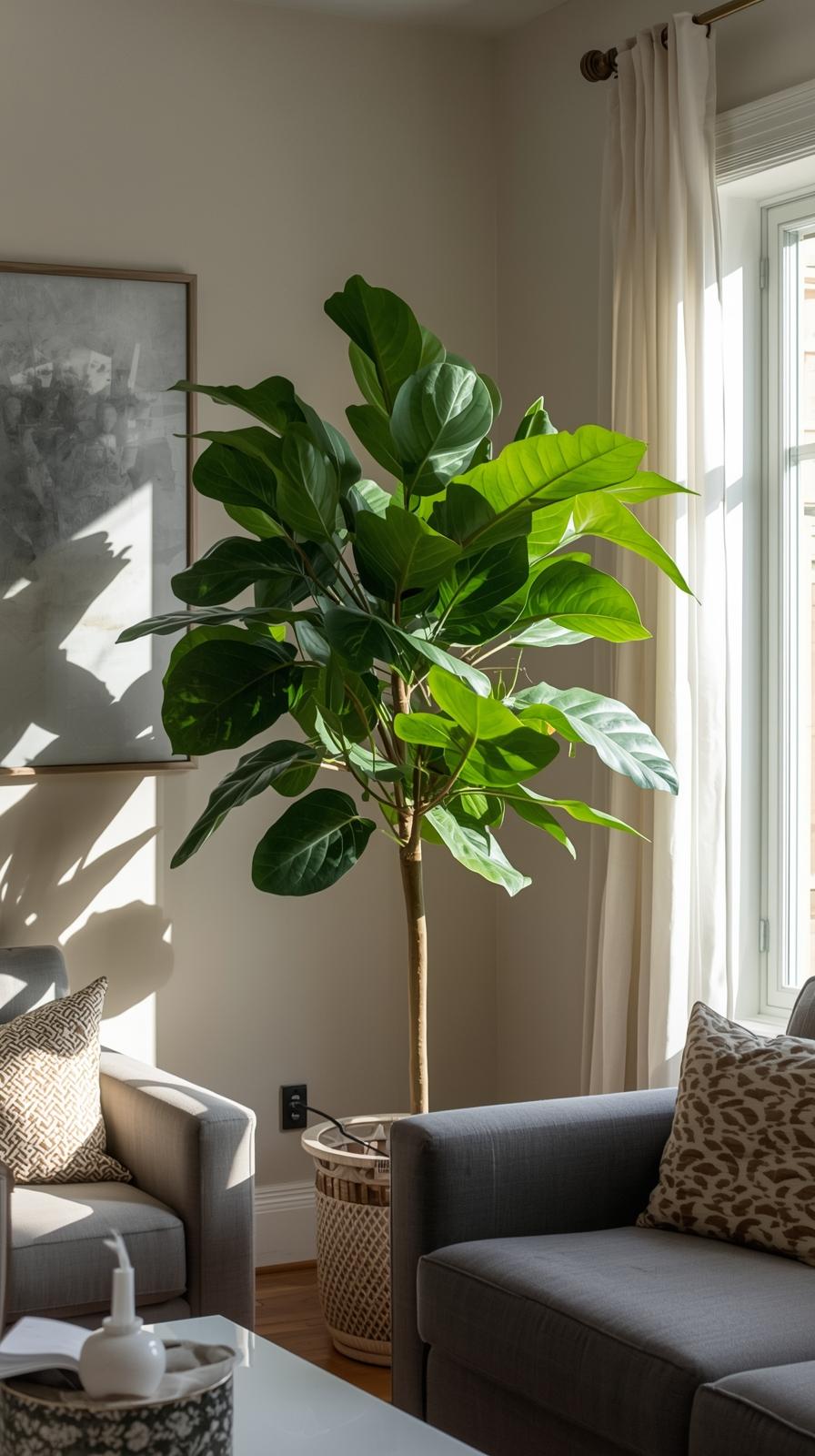
The stretching and sparse growth that creates that “leggy” look results from specific environmental conditions and care practices that signal the plant to prioritize height over fullness. What makes this issue particularly frustrating is that it develops gradually, often going unnoticed until the plant has lost significant density in its lower branches.
Understanding why fiddle leaf figs become leggy and implementing targeted strategies to restore bushy growth will transform your plant from a disappointing stick with a few leaves on top back into the full, dramatic specimen that makes these plants such coveted houseplants.
Understanding Why Fiddle Leaf Figs Become Leggy
Legginess in fiddle leaf figs occurs when plants prioritize vertical growth over lateral branching, creating tall, sparse growth with large gaps between leaves. This growth pattern develops as a survival response to specific environmental conditions that trigger the plant’s natural stretching behavior.
Light deficiency represents the primary cause of leggy growth in fiddle leaf figs. When plants receive insufficient light, they activate etiolation responses that elongate stems and internodes as the plant reaches toward available light sources.
This stretching allows plants to potentially reach better lighting conditions in their natural habitat, but in indoor settings, it simply creates undesirable growth patterns.
The quality of light matters as much as quantity for preventing leggy growth. Plants receiving bright but indirect light from a single direction will stretch toward that light source, developing asymmetrical, elongated growth.
Fiddle leaf figs need consistent, multi-directional lighting to promote balanced, bushy development.
Inadequate lighting also affects leaf production patterns. Plants struggling with low light produce fewer leaves with longer spaces between them, contributing to the sparse appearance characteristic of leggy specimens.
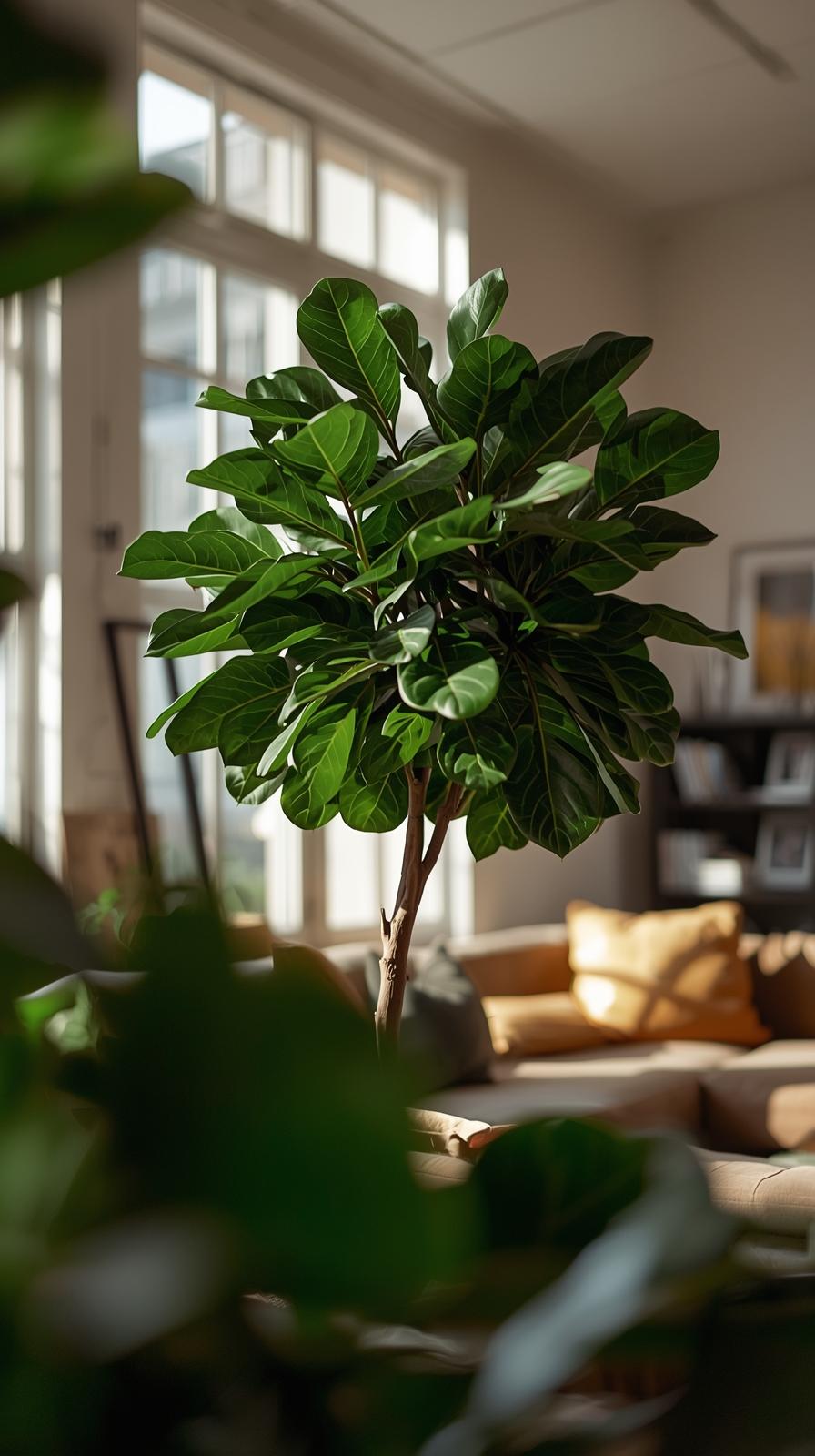
Each new leaf requires significant energy investment, so light-stressed plants space leaves farther apart to maximize energy efficiency.
Temperature and humidity interactions influence legginess development. Plants in warm conditions with adequate humidity grow more vigorously but may become leggy if lighting doesn’t support the increased metabolic activity.
Conversely, cool conditions with low humidity slow overall growth and can exacerbate stretching as plants struggle to maintain photosynthetic efficiency.
Pruning history significantly impacts plant architecture. Fiddle leaf figs that have never been pruned tend to develop single-trunk growth patterns that naturally become leggy over time.
Without intervention to encourage branching, these plants continue extending upward rather than developing the lateral growth that creates fullness.
Environmental Factors Creating Leggy Growth
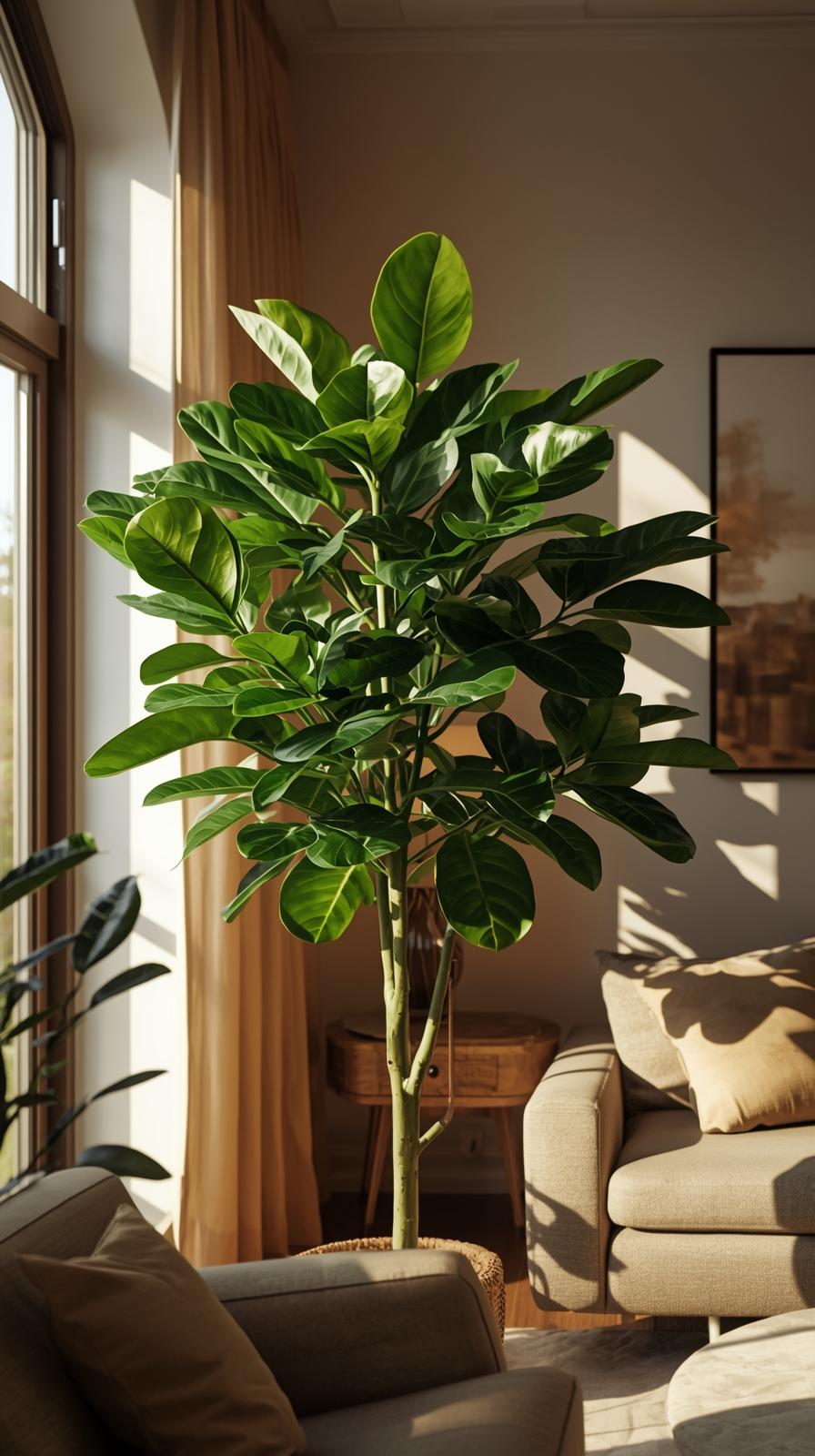
Lighting positioning creates significant impacts on fiddle leaf fig growth patterns. Plants positioned too far from windows or in locations receiving only directional light develop stretching as they reach toward their primary light source.
North-facing windows, while providing consistent light, often lack the intensity needed to prevent etiolation.
Seasonal light changes contribute to legginess development, particularly during winter months when available daylight decreases significantly. Plants accustomed to bright spring and summer conditions may begin stretching during darker months, developing growth patterns that persist even when lighting improves.
Window treatments and obstructions filter light in ways that promote stretching. Sheer curtains, blinds, or nearby buildings that block direct light create conditions favoring leggy growth.
Even seemingly minor light reductions can trigger stretching responses in light-sensitive fiddle leaf figs.
Indoor air circulation affects growth patterns through its influence on transpiration and metabolic processes. Stagnant air conditions slow transpiration, reducing the plant’s ability to efficiently process nutrients and water.
This metabolic slowdown often coincides with stretching as plants attempt to optimize their energy usage.
Seasonal temperature fluctuations interact with lighting changes to promote legginess. Cool winter temperatures combined with reduced light create conditions where plants conserve energy by reducing leaf production while continuing stem elongation toward available light sources.
Humidity levels below optimal ranges stress plants in ways that contribute to leggy growth.
Low humidity forces plants to close stomata to conserve moisture, reducing photosynthetic efficiency and triggering stress responses that include etiolation.
Immediate Solutions for Leggy Plants
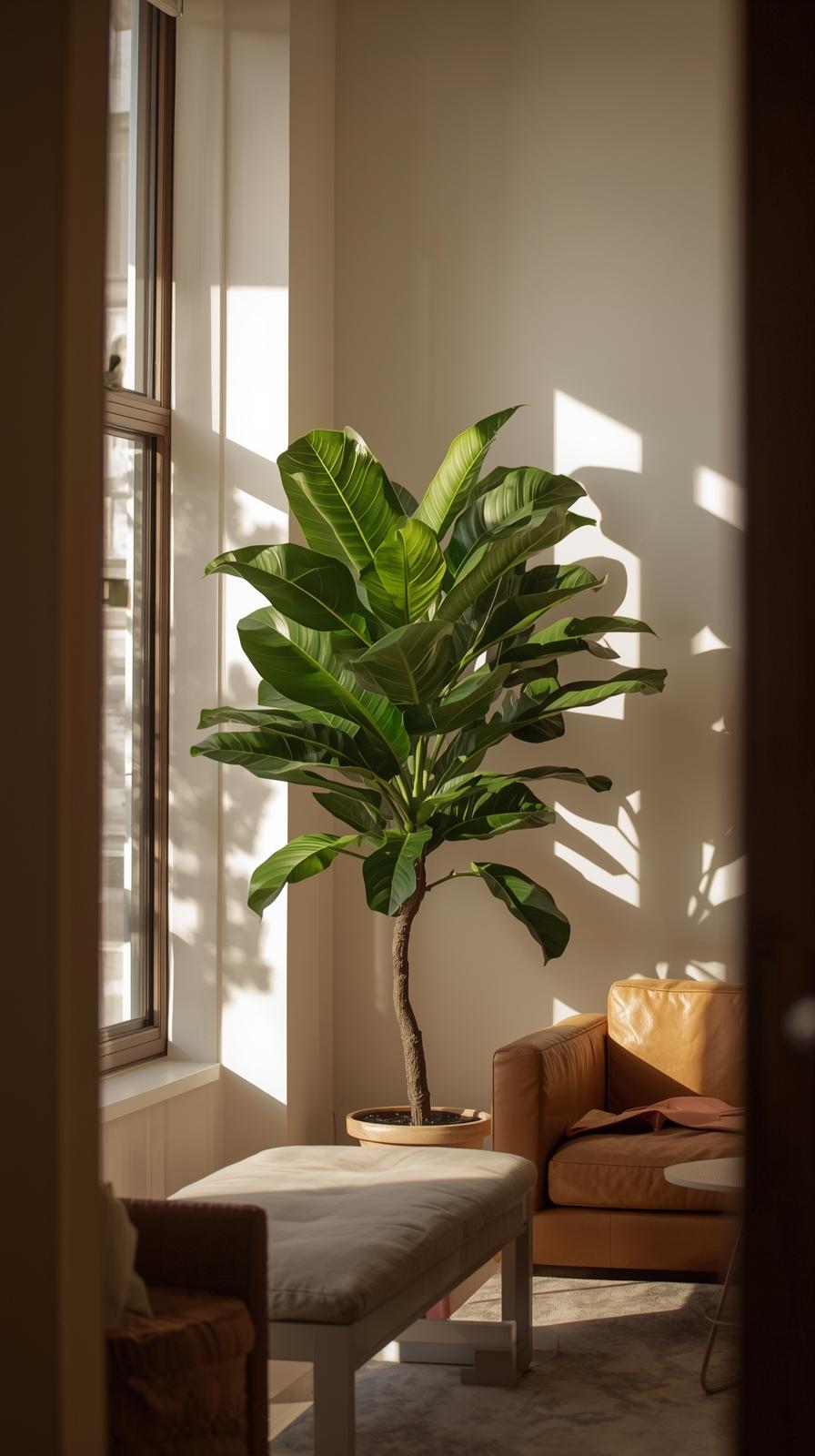
Strategic lighting improvements provide the fastest results for addressing leggy growth. Relocate plants to brighter locations with better light distribution, ideally near south or east-facing windows where they receive several hours of direct morning light.
If natural light is limited, supplement with full-spectrum LED grow lights positioned 18-24 inches above the plant canopy.
Pruning interventions can immediately begin transforming leggy plants into bushier specimens. The key technique involves “topping” the main growing tip to stimulate lateral bud development.
Make clean cuts 2-3 inches above a node or healthy leaf, using sterilized pruning shears to prevent infection.
This removes the plant’s apical dominance and encourages branching from lower nodes.
Notching techniques provide more targeted branching control than general pruning. Make small horizontal cuts about one-third through the stem just above nodes where you want new branches to develop. This technique interrupts the flow of growth hormones and stimulates dormant buds to activate, creating new growth points that fill in sparse areas.
Pinching growing tips on younger growth encourages bushier development without dramatic pruning. Gently pinch soft growing tips between your fingers when new shoots reach 4-6 inches long. This gentle intervention promotes branching while maintaining the plant’s natural growth momentum.
Environmental modifications support pruning efforts by creating conditions favorable for new growth development.
Increase humidity around recently pruned plants using humidity trays or localized humidifiers. The elevated moisture levels help reduce stress and promote faster recovery from pruning interventions.
Fertilization timing coordinates with pruning to fuel new growth development. Apply balanced, diluted fertilizer 2-3 weeks after pruning when new buds begin showing activity.
This timing provides nutrients when plants can most effectively utilize them for branch development rather than continued vertical growth.
Long-Term Strategies for Bushier Growth
Regular pruning schedules maintain bushy growth patterns and prevent legginess from redeveloping. Plan annual pruning sessions during early spring when plants enter active growing periods. Light trimming every 6 months keeps growth dense while major structural pruning can be performed annually as needed.
Light management systems ensure consistent conditions that support bushy growth year-round. Rotate plants weekly to ensure even light exposure on all sides, preventing directional stretching.
Consider installing grow light timers that provide supplemental lighting during shorter winter days when natural light becomes insufficient.
Training techniques guide new growth into desired patterns. Use plant stakes or ties to position branches horizontally rather than allowing vertical growth. This horizontal training encourages more branching points along the redirected stems while creating fuller plant architecture.
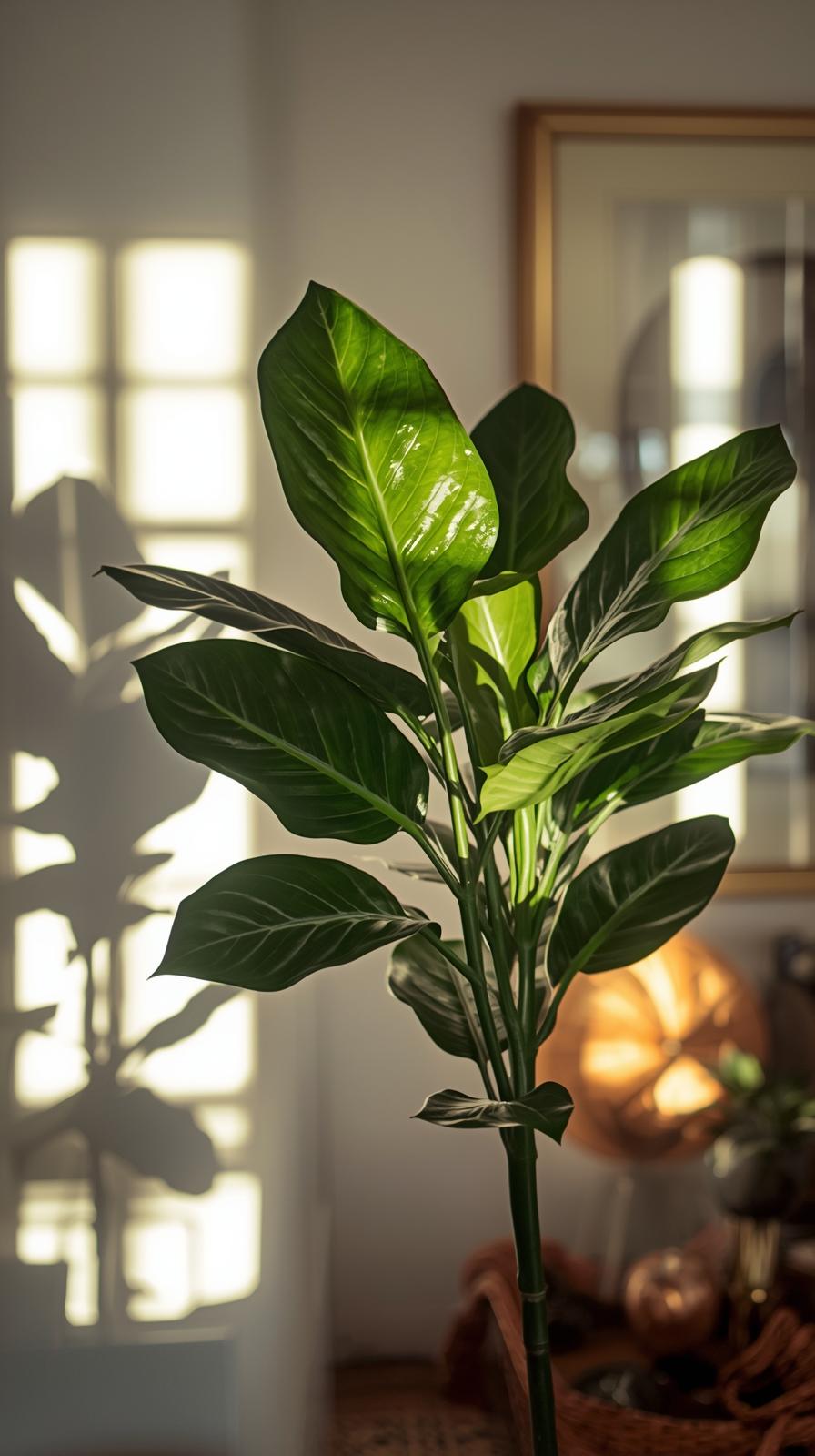
Selective pruning maintains plant shape while encouraging continued branching. Remove or shorten any branches that begin outgrowing the desired plant silhouette. Focus on maintaining a balanced canopy where no single branch dominates the plant’s overall structure.
Root management supports bushy top growth by ensuring adequate nutrition uptake. Repot plants every 2-3 years using fresh, well-draining soil that supports healthy root development. Proper root health translates directly to the plant’s ability to support dense foliage production.
Fertilization strategies emphasize phosphorus and potassium over nitrogen to promote branching rather than rapid vertical growth. Use balanced fertilizers with equal or higher P-K ratios compared to nitrogen content. Apply fertilizer monthly during growing season, reducing frequency during winter months.
Advanced Techniques for Maximum Bushiness
Air layering creates new plants while encouraging lower trunk branching on established specimens. Make shallow cuts in the trunk where you want new roots to develop, wrap with moist sphagnum moss, and cover with plastic.
Once roots develop, the new plant can be separated, often stimulating branching at the cut site on the parent plant.
Grafting techniques allow combining multiple plants to create exceptionally full specimens. This advanced technique involves joining branches from bushy plants onto leggy trunks, creating instant fullness that would take years to develop through pruning alone. While challenging, grafting provides immediate dramatic results.
Growth hormone applications can stimulate branching in reluctant plants. Cytokinin-based rooting hormones applied to cut stems or nodes can encourage bud break and branch development.
Use these products sparingly and according to manufacturer directions, as overuse can create excessive branching that weakens plant structure.
Stress training involves controlled environmental stress that encourages bushier growth patterns. Brief periods of reduced watering or slight temperature stress can trigger plants to produce more compact growth, though this technique requires careful monitoring to avoid damage.
Companion planting strategies create microclimates that support bushier growth. Grouping plants together increases local humidity and creates more even light distribution through reflection and diffusion. This environmental modification naturally supports the conditions that promote full, bushy growth.
Root restriction techniques using smaller pots can encourage more compact, bushy growth by limiting root expansion. This technique requires careful attention to watering and fertilization, as restricted plants need more frequent care but often develop more attractive, dense growth patterns.
Maintenance and Prevention Strategies
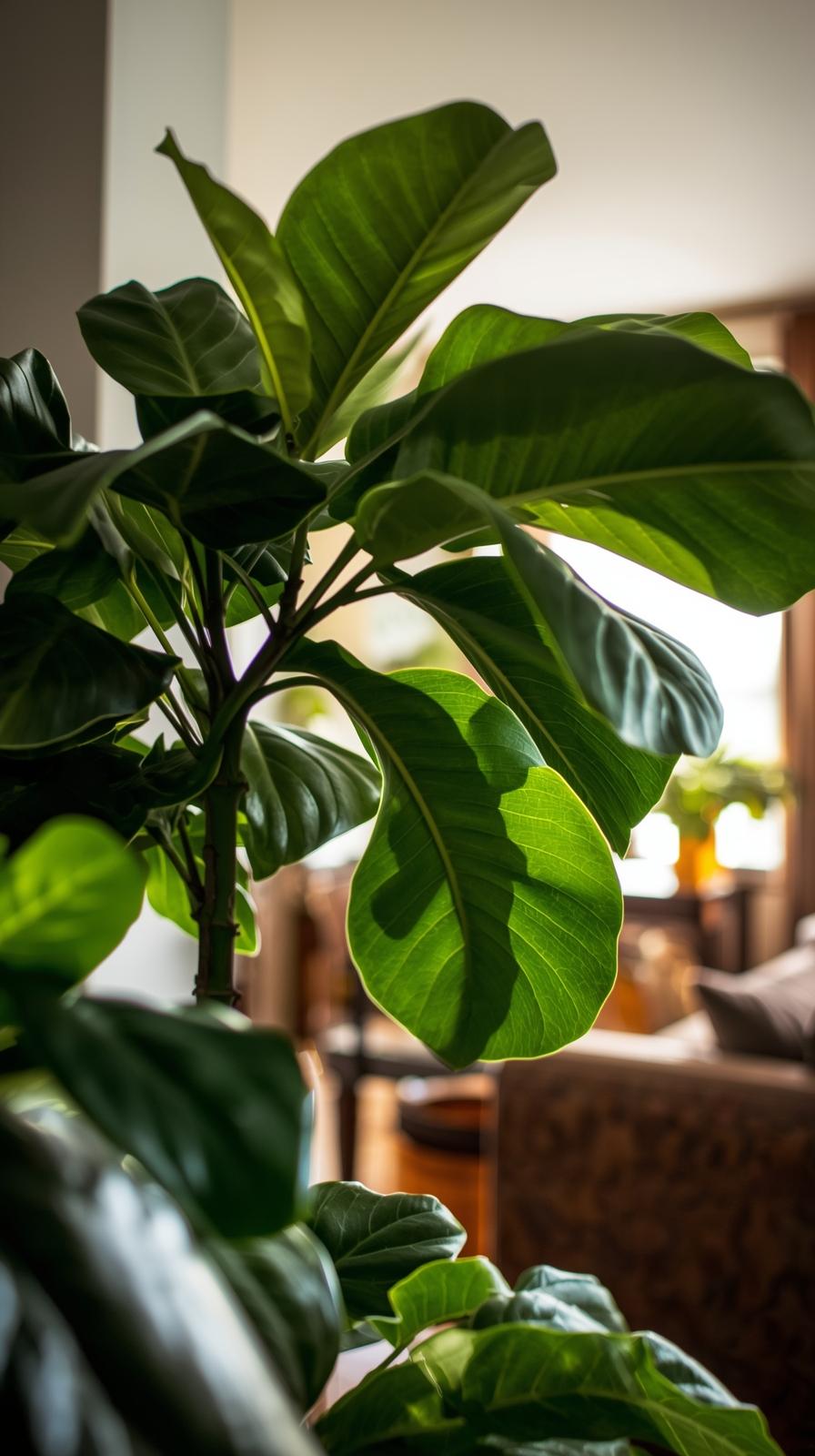
Weekly monitoring prevents legginess from redeveloping by catching stretching behavior early. Check for elongating internodes, reduced leaf production, or directional growth patterns that indicate developing problems. Early intervention prevents minor issues from becoming major reshaping projects.
Seasonal adjustments maintain optimal growing conditions year-round. Provide supplemental lighting during winter months, adjust watering schedules for changing growth rates, and modify fertilization timing to match seasonal growth patterns.
These proactive adjustments prevent the environmental stress that triggers leggy growth.
Tool maintenance ensures clean, precise pruning that promotes healthy regrowth. Keep pruning shears sharp and sterile, clean tools between plants to prevent disease transmission, and make clean cuts that heal quickly without stress to the plant.
Record keeping tracks pruning schedules, growth patterns, and environmental changes that affect plant development. Document which techniques produce the best results for your specific growing conditions, allowing you to refine your approach over time for optimal results.
Environmental consistency prevents the stress responses that contribute to leggy development. Maintain stable temperatures, consistent watering schedules, and adequate humidity levels throughout the year. Plants experiencing consistent conditions focus energy on healthy, bushy growth rather than stress responses.
Patience during transformation allows plants time to develop new growth patterns. Significant bushiness improvements take 6-12 months to become apparent, as plants must develop new branch structures and fill in sparse areas with new foliage.
Consistent care during this period determines long-term success.
Transforming a leggy fiddle leaf fig into a full, bushy specimen represents one of the most rewarding challenges in houseplant care, combining immediate interventions with long-term strategies that create lasting improvements. The process requires understanding that legginess develops from specific environmental conditions and care practices, all of which can be modified to encourage the dense, attractive growth that makes these plants so desirable.
Success depends on addressing underlying causes through improved lighting and environmental management while using pruning techniques to stimulate new branching and redirect growth energy into creating fullness rather than height.
With consistent application of proper techniques and patience for plants to respond and develop new growth patterns, even the most stretched-out fiddle leaf fig can regain the lush, bushy appearance that transforms it from a disappointment into a stunning focal point worthy of its reputation as the ultimate houseplant.

